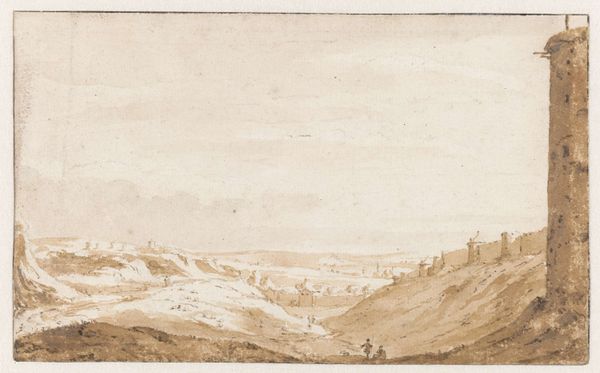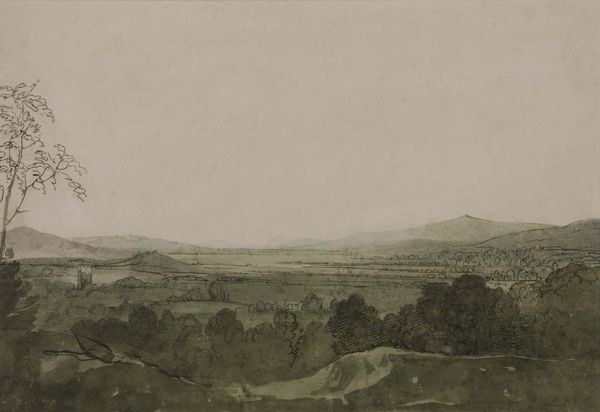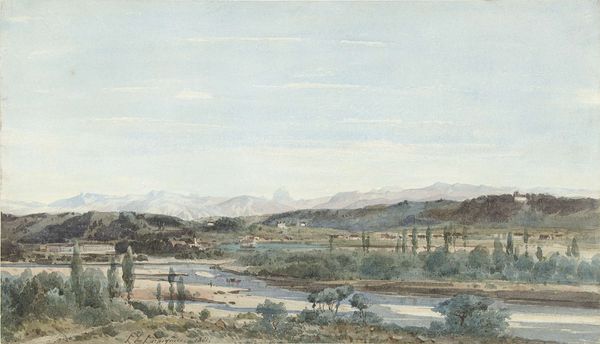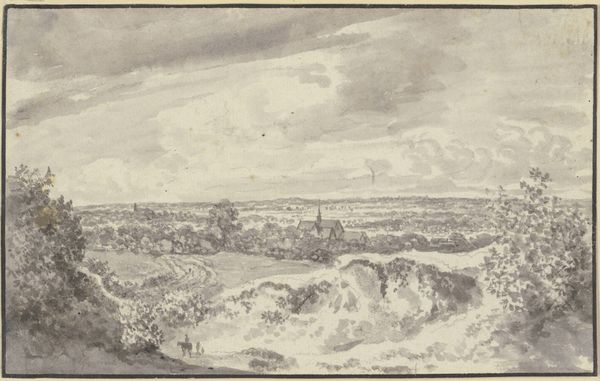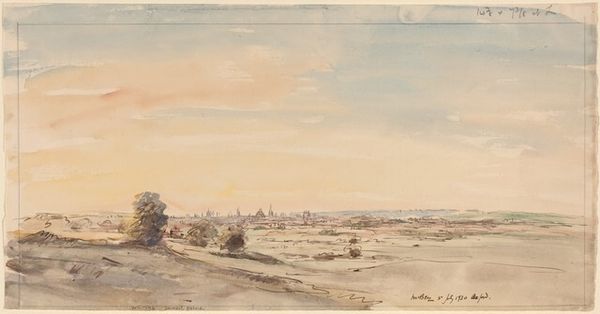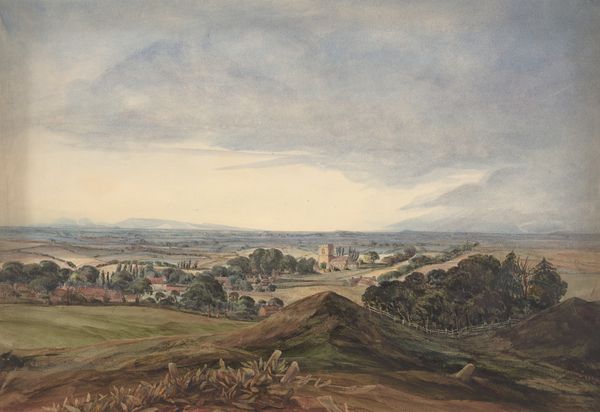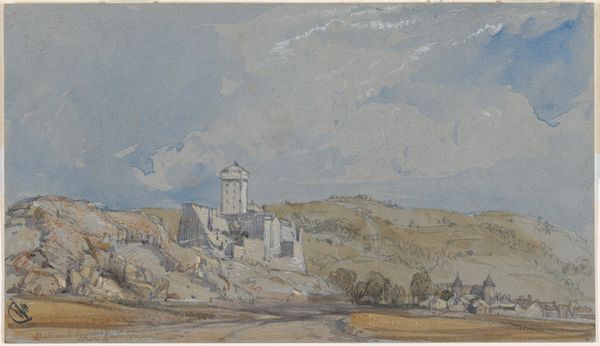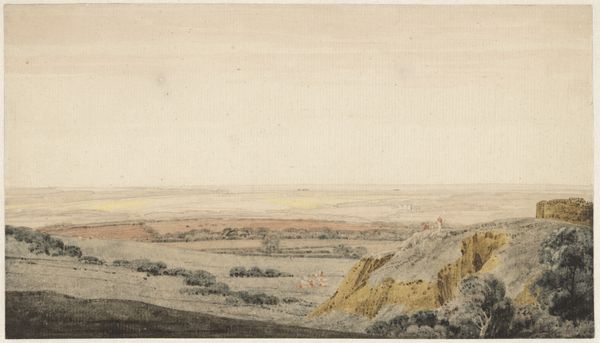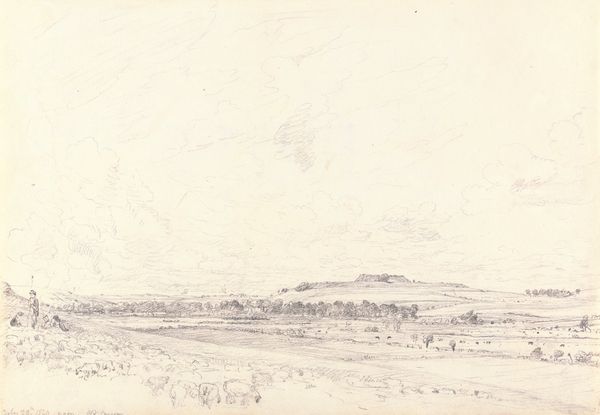
drawing, watercolor
#
drawing
#
landscape
#
watercolor
#
cityscape
#
watercolor
#
realism
Dimensions: overall: 32.6 x 46.2 cm (12 13/16 x 18 3/16 in.)
Copyright: National Gallery of Art: CC0 1.0
Editor: We're looking at Henry Rushbury's watercolor drawing, "From the Appian Way," created in 1928. I’m struck by how the soft washes give the ancient aqueducts a sense of distance and almost ethereality. How do you interpret Rushbury’s choice of medium in relation to the subject matter? Curator: The ethereal quality isn’t accidental. Watercolors, because of their inherent connection to water – the lifeblood literally channeled by those aqueducts – create a powerful link between the material means of production and the landscape depicted. Rushbury's rendering process reflects a human intervention shaping and controlling nature for consumption. Notice how the subtle variations in tone and texture echo the effects of weathering on the ancient structures, demonstrating the ongoing impact of time and the elements on these essential components of urban life. Editor: That's fascinating. It almost makes the aqueducts appear vulnerable despite their imposing scale. Is that something intentional, do you think? Curator: Consider the socio-economic context. 1928 was a period of intense industrial growth. By choosing watercolor, a medium often associated with leisure and traditional landscape painting, Rushbury creates a visual tension. He evokes nostalgia for a pre-industrial, more agrarian past while documenting the continued existence – though perhaps impending obsolescence – of these ancient technologies. The blurring of those crisp lines through this specific technique speaks volumes about production versus decline. How might we further consider the symbolism of the material and social decay evident? Editor: It's interesting to consider how the materiality of the artwork highlights this relationship between labor, resources, and the changing landscape. It pushes you to think beyond just the aesthetic. I wouldn’t have picked that up on my own. Curator: Indeed, it makes you consider the value we place on permanence versus impermanence, and who benefits.
Comments
No comments
Be the first to comment and join the conversation on the ultimate creative platform.

